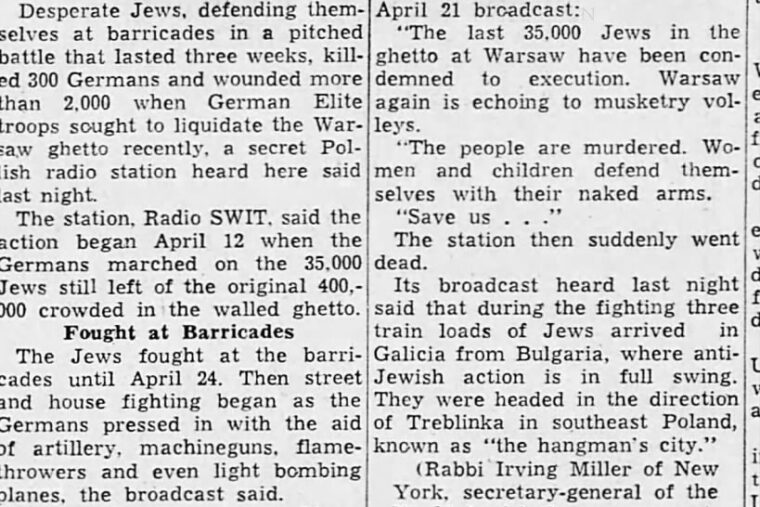The Germans (…) lost control of the situation. We could hear them shouting: “The Jews are shooting at us!”
Perhaps, had it not been for the January Uprising, the April Uprising in the Warsaw Ghetto would not have taken place.
The Warsaw Ghetto, from the moment it was established by the German occupation authorities on 2 October 1940, closed and isolated from the rest of the city on 16 November 1940, functioned as the so-called “Jewish Quarter”. In the summer of 1942, the Germans began the first stage of its liquidation (the so-called Great Action carried out as part of the Operation Reinhardt). The actions were preceded by terror and propaganda, the purpose of which was to persuade the ghetto prisoners to voluntarily “resettle to the East”.
In fact, from 22 July to 21 September 1942, the goal was to kill as many Warsaw Jews as possible in the Treblinka extermination camp. At that time, the majority of ghetto activists – social activists and members of political groups in opposition to the Judenrat – rejected the idea of armed resistance as they did not want the remaining population to be annihilated. Fear, an awareness of one’s own weakness in the face of the criminal German machine and lack of faith in the sense of taking up the fight prevailed.



